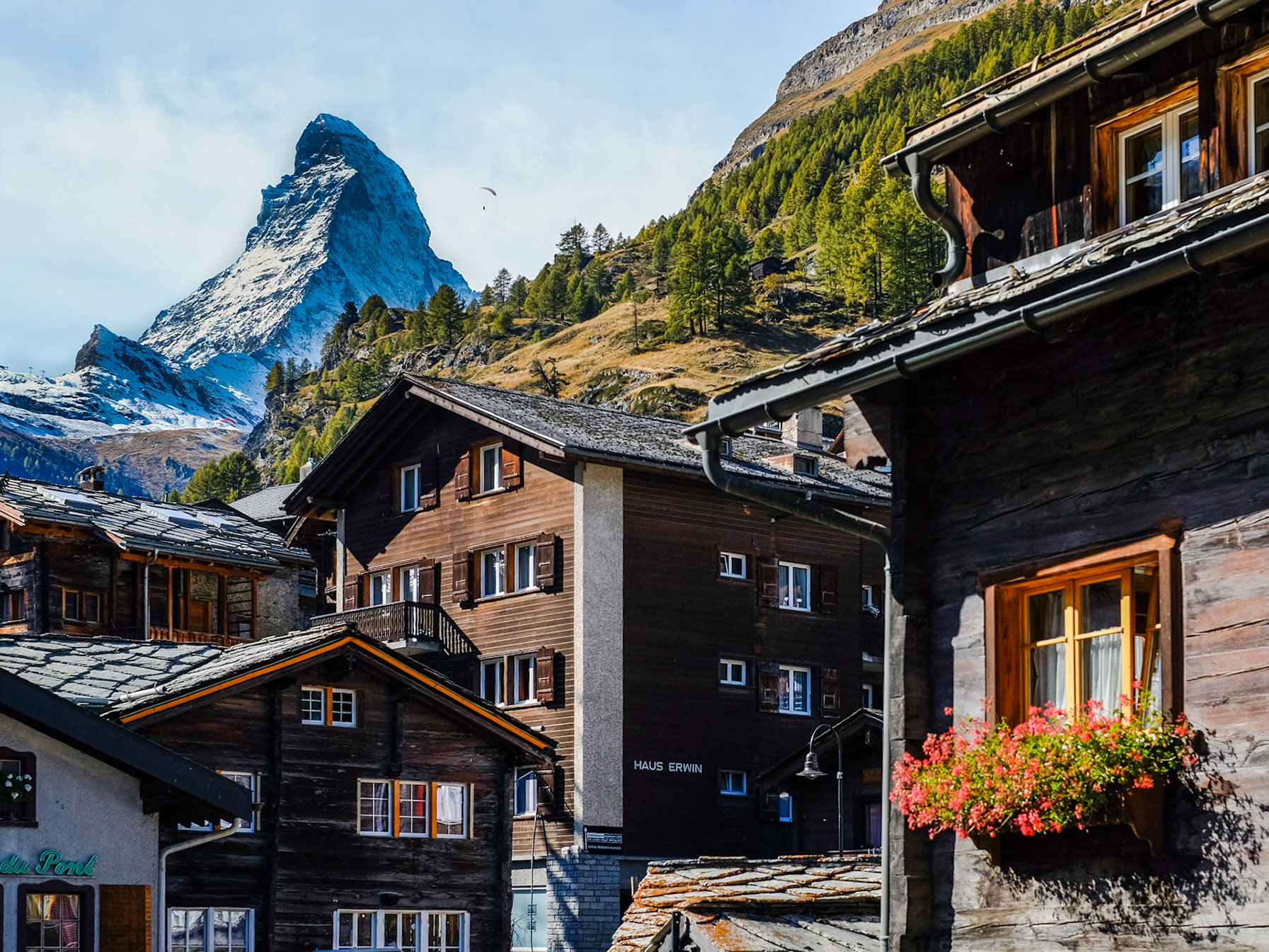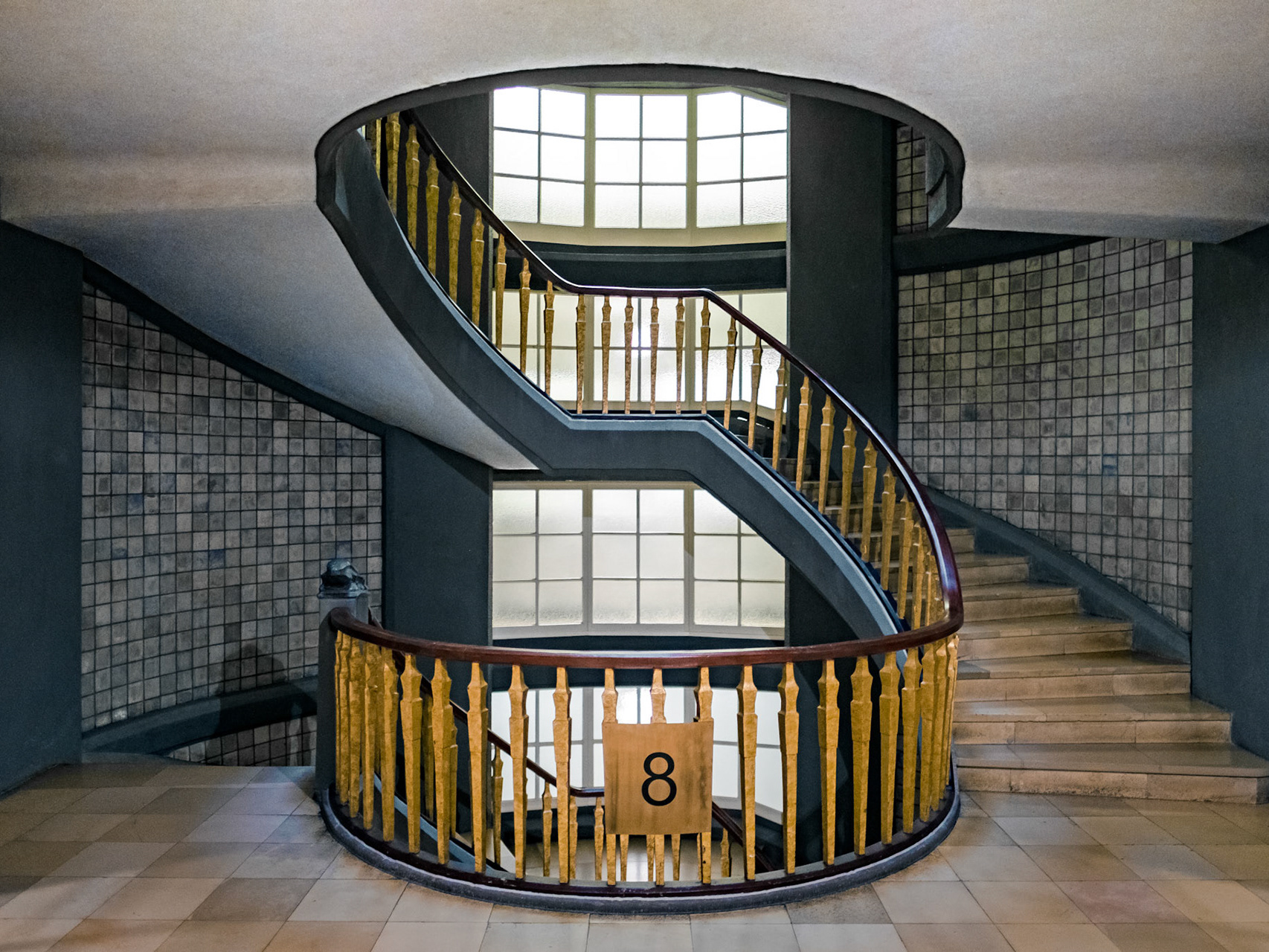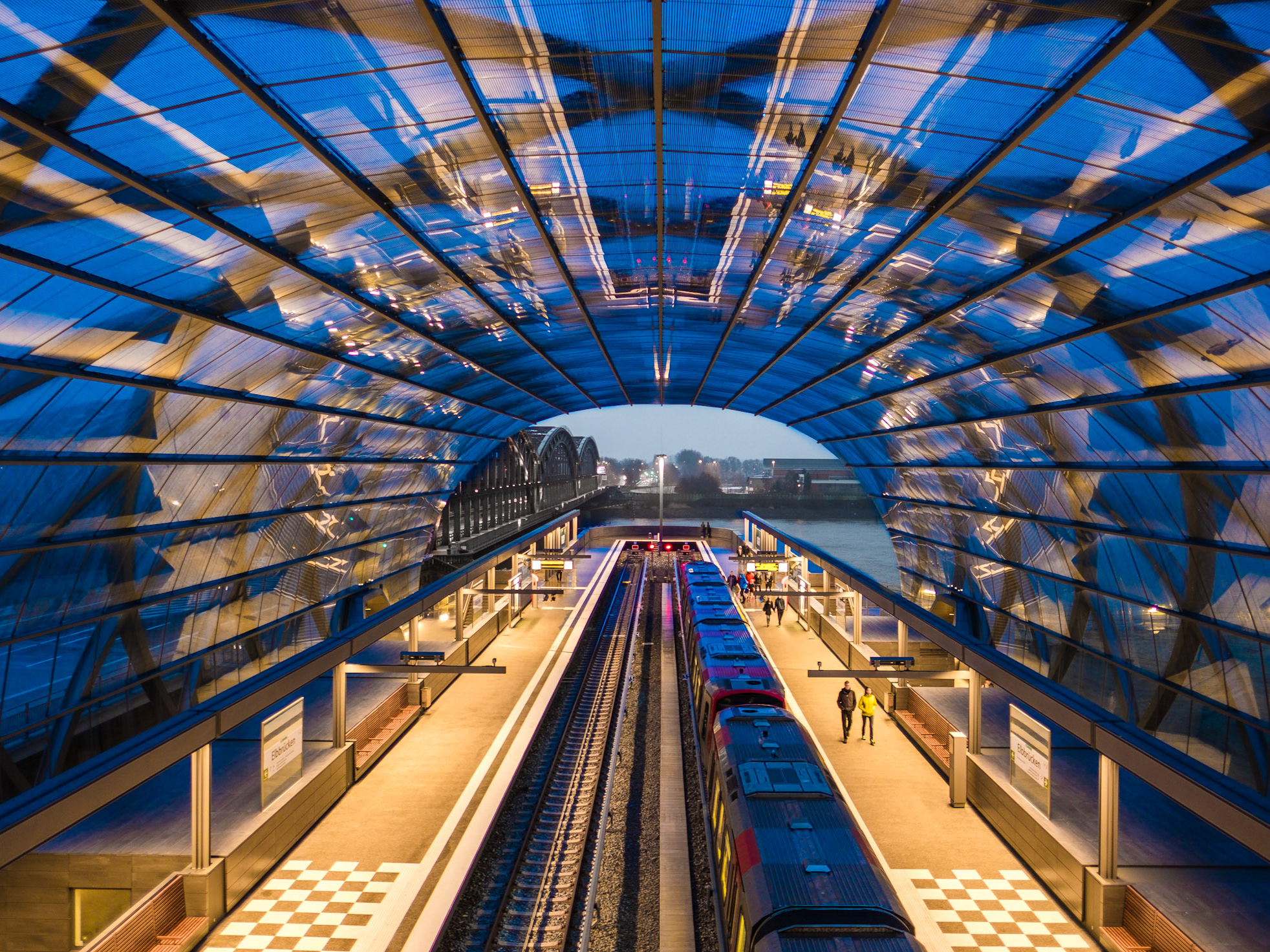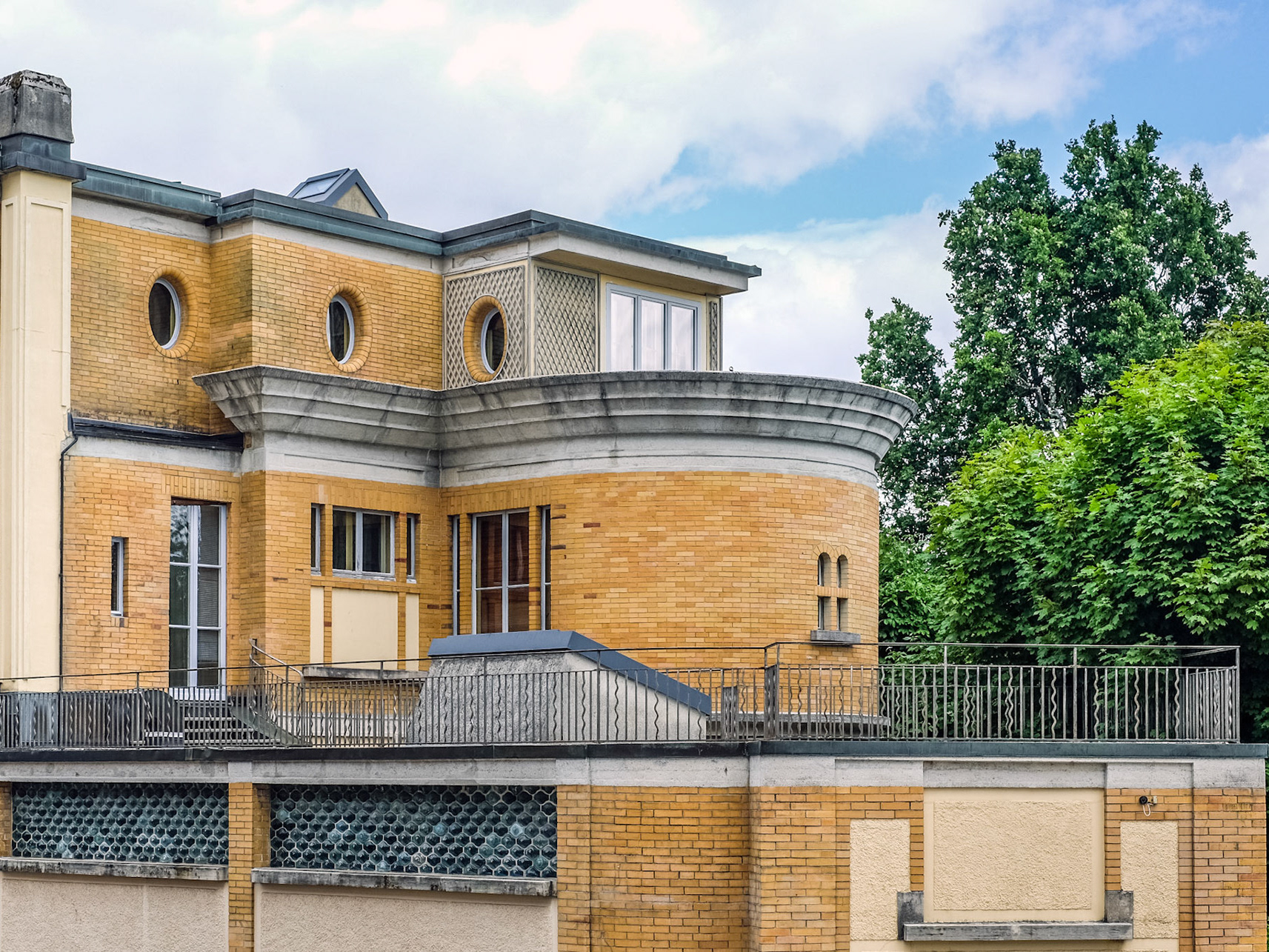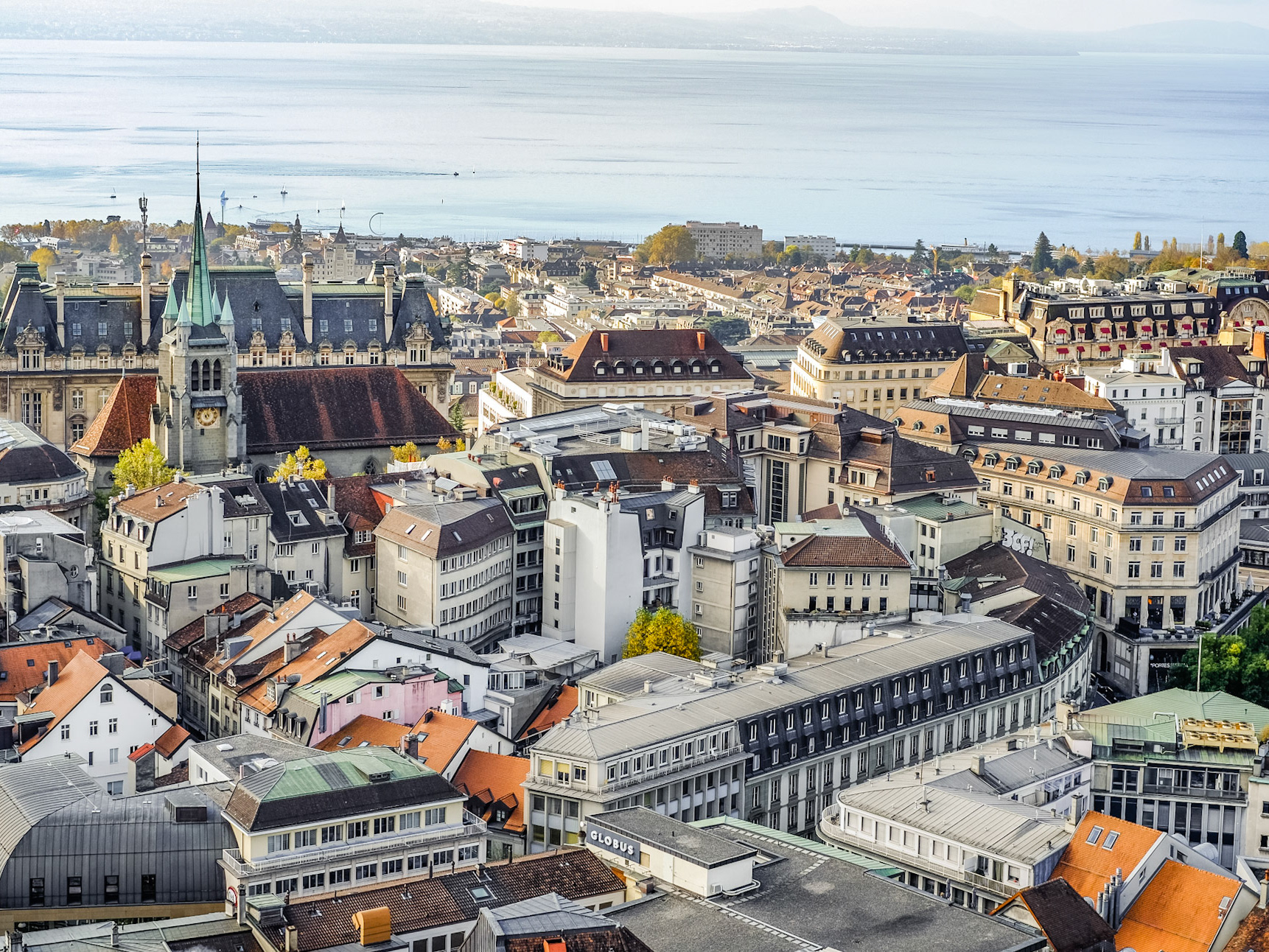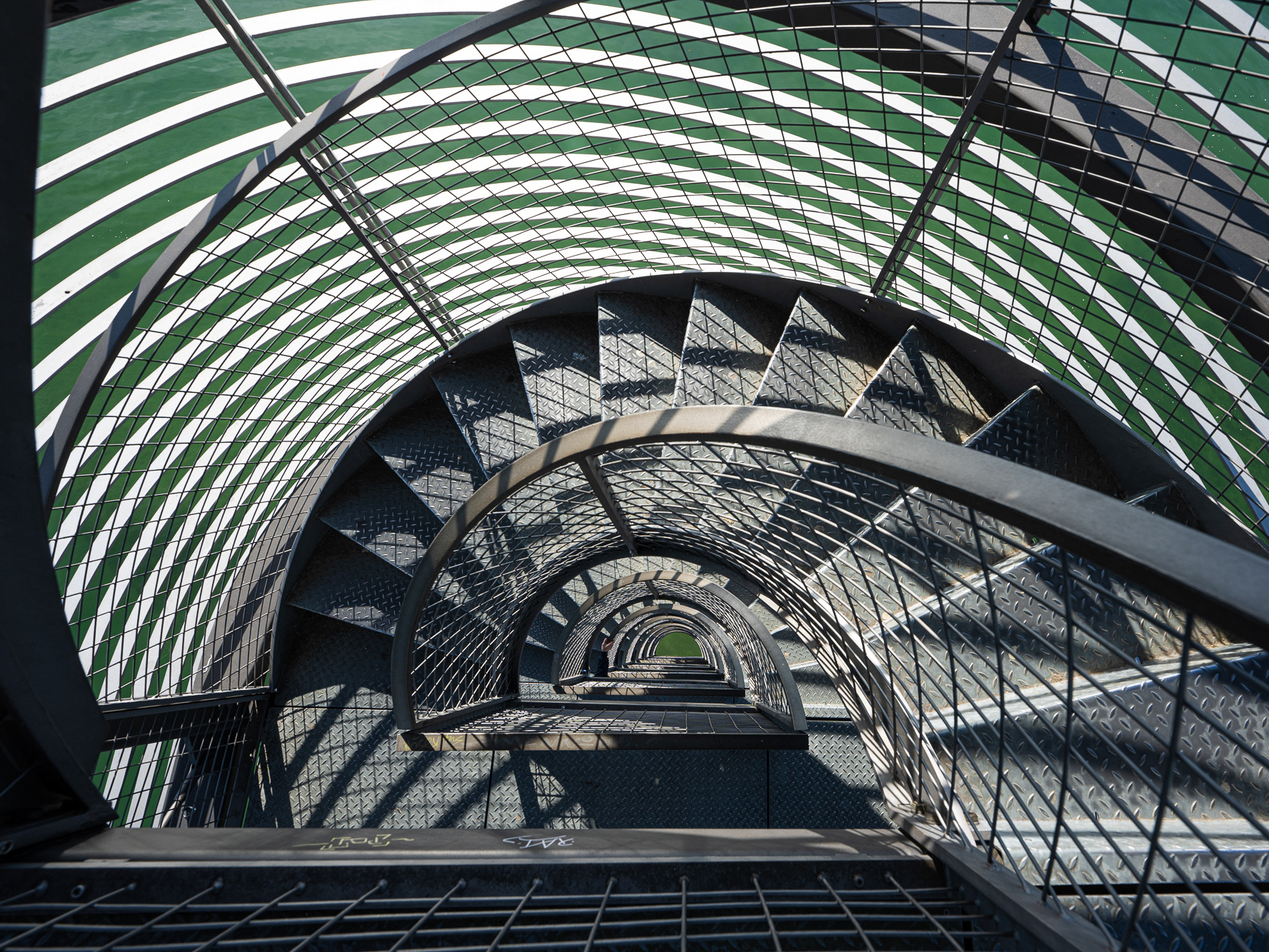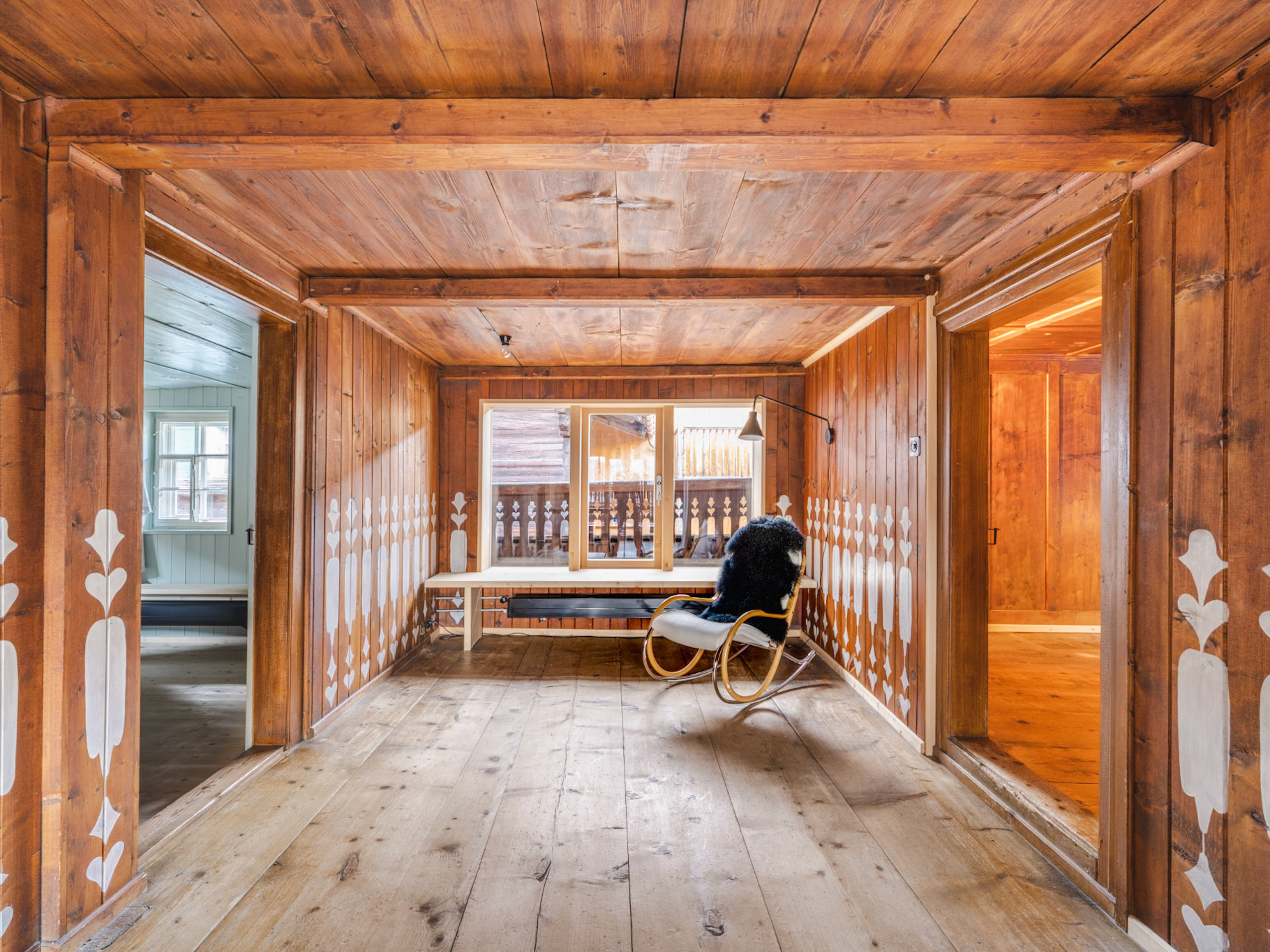The Stockholm subway has been described as the world's longest art exhibit. The first line opened in 1950 and today there are over 100 stations with 90 of them featuring works of art !
Famous Swedish writer August Strindberg (1849 - 1912) had already touched upon the question of public art by declaring "art cannot continue to be exclusive to just some people, because then it won’t be long lived" and in the 1950s, artists Vera Nilsson and Siri Derkert started to lobby for art to be integrated into the new subway system. The official approval happened in 1956 when a competition to embellish the stations was announced.
Let's have a look at some of the most beautiful stations !
Tekniska Högskolan
The Tekniska Högskolan station allows access to the KTH Royal Institute of Technology. Located on the T14, red line, the station opened in 1973. The station was decorated by Swedish set designer, costume designer and painter Lennart Mörk who lived from 1932 until 2007. The paintings illustrate the four elements earth, air, fire and water, the universe and technological development.

Stockholms tunnelbana - Tekniska Högskolan

Stockholms tunnelbana - Tekniska Högskolan
Stadion
Just next to Tekniska Högskolan, the Stadion station opened in 1973. It is located near the Stockholm Olympic Stadium, designed by architect Torben Grut, and built for the 1912 Olympic Summer games. The station design is by Swedish painter, graphic artist and sculptor Åke Pallarp (1933 - 2013) and painter Enno Hallek, born in 1931 in Estonia. Enno Hallek moved from Soviet-occupied Estonia to Sweden in 1943 and has been inspired by the rainbows and sunsets he experienced, as a child, on his family's fishing trawler.
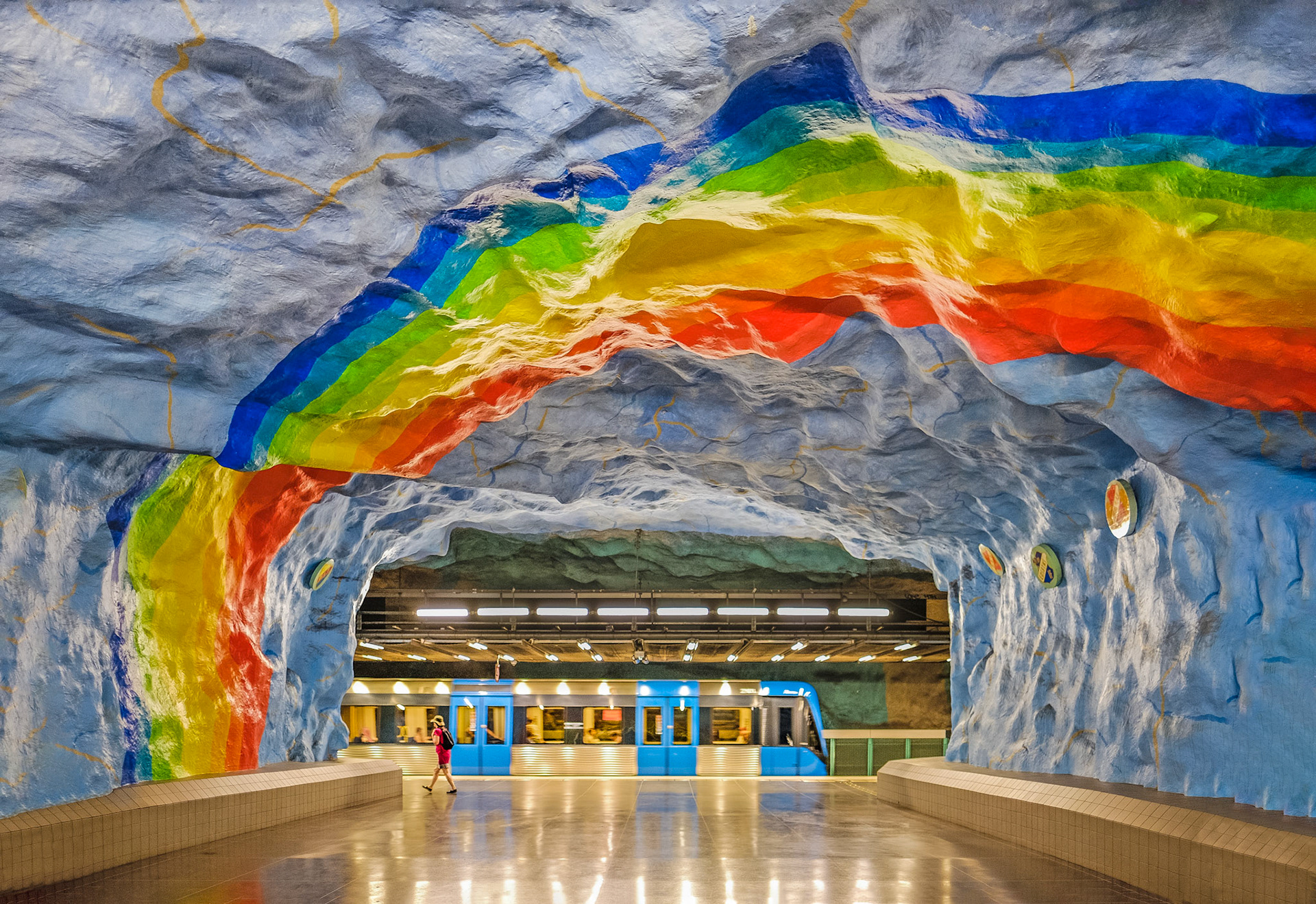
Stockholms tunnelbana - Stadion

Stockholms tunnelbana - Stadion
T-Centralen
T-Centralen is at the heart of the Stockholm subway system: all lines meet here. The station opened in 1957 and was originally named Centralen. Unfortunately, that led to some confusion with the nearby central railway station and hence the "T" prefix was quickly added in January 1958. The station artist was Per Olof Ultvedt who was born in 1927 in Finland and moved to Sweden in 1938. He was one of the most important representatives of kinetic art in Scandinavia and collaborated among others with Jean Tinguely and Niki de Saint Phalle. The huge blue leaves in different shapes are designed to provide relief from a stressful environment.

Stockholms tunnelbana - T-Centralen
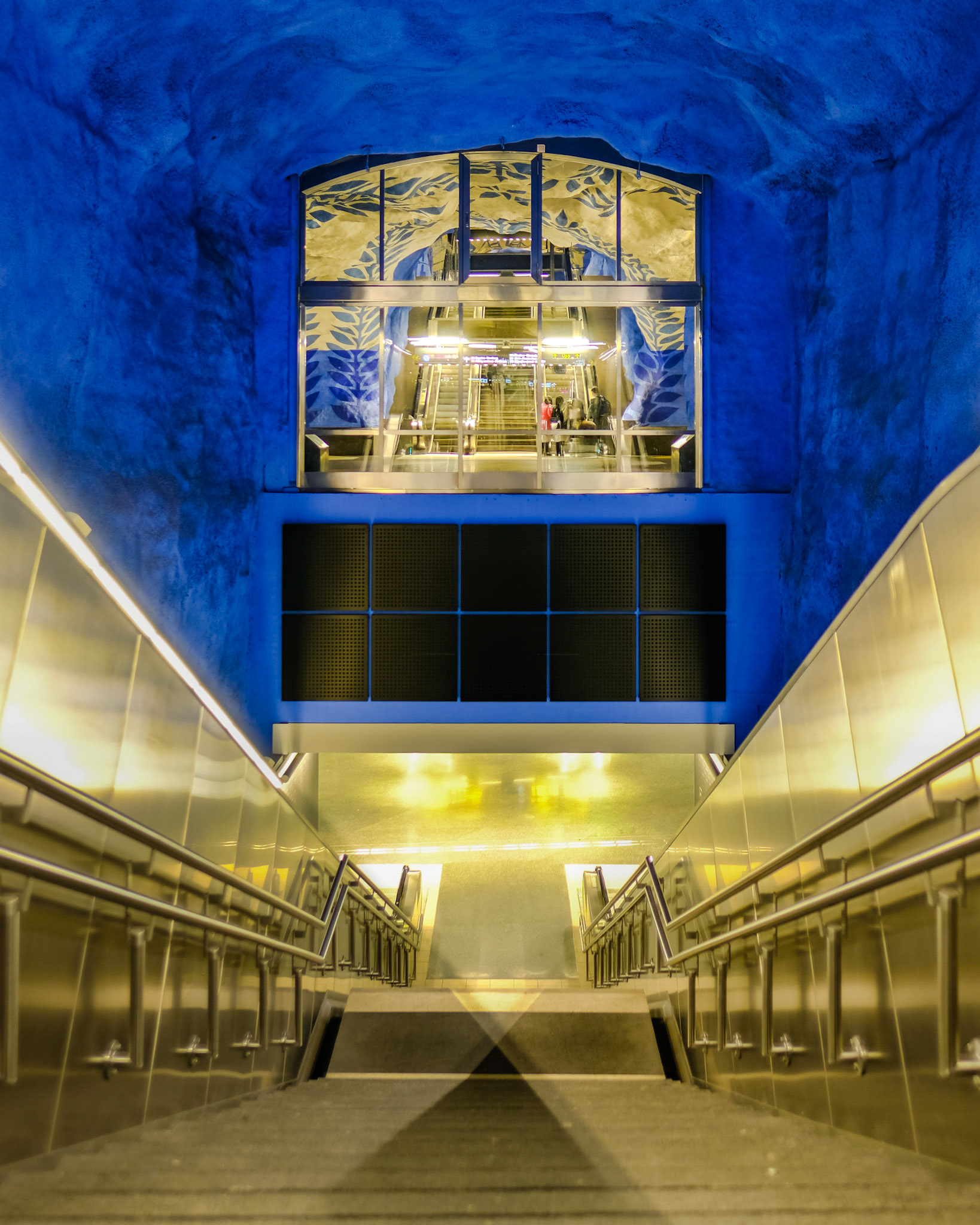
Stockholms tunnelbana - T-Centralen
Kungsträdgården
Changing in T-Centralen to the T10/T11 blue line, we arrive at Kungsträdgården. Opened in 1977, the station design is by Swedish sculptor and painter Ulrik Samuelson. His murals reference a baroque garden that once existed here and Stockholm's Makalös palace, built in 1653 and demolished in 1825 after a fire. Since the station walls have running water, this station is also renowned for its unique flora and fauna. In 2016, even two previously unknown species of fungi were discovered on its walls.

Stockholms tunnelbana - Kungsträdgården

Stockholms tunnelbana - Kungsträdgården
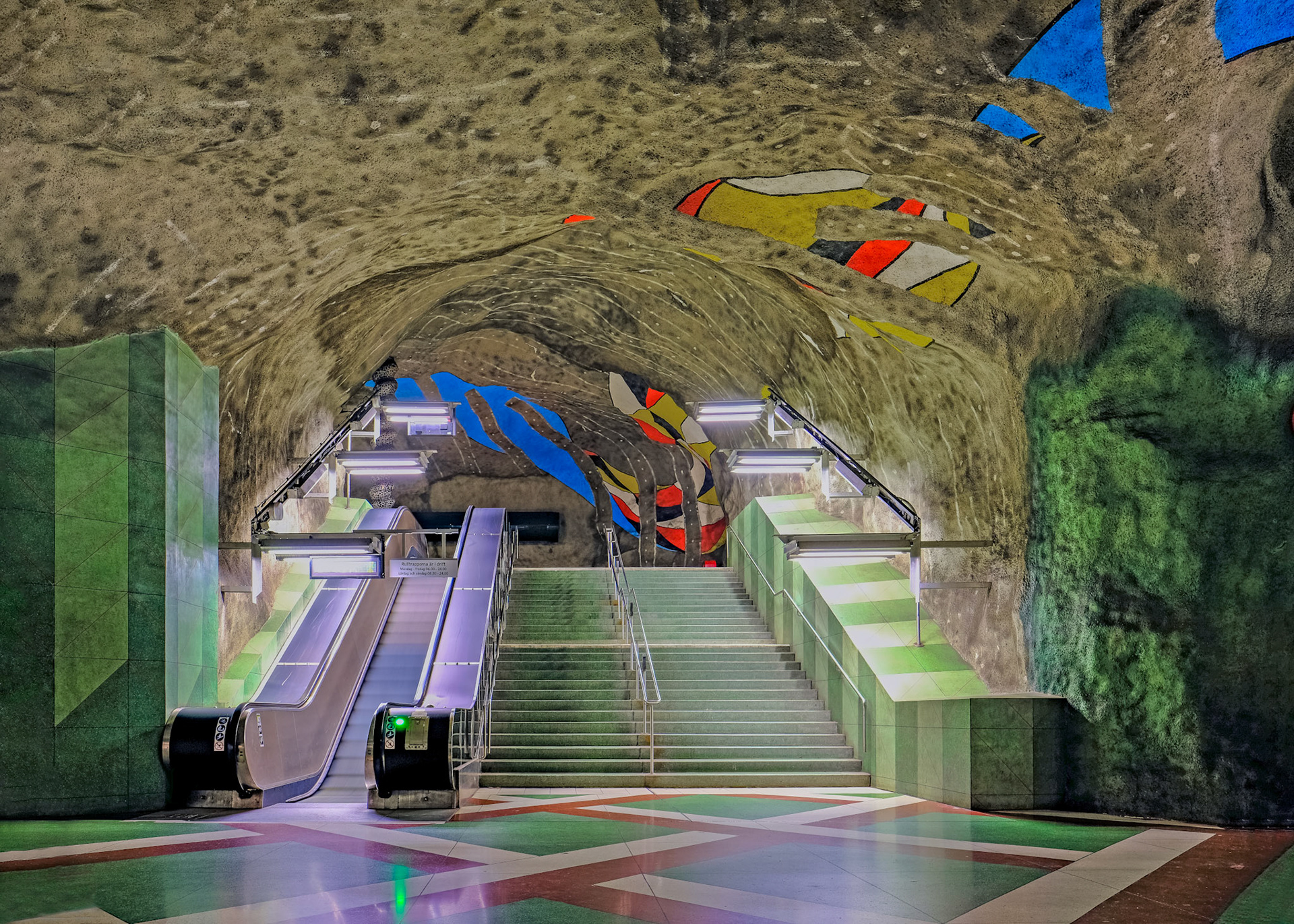
Stockholms tunnelbana - Kungsträdgården
Rådhuset
We stay on the blue line but switch directions, going to the opposite side of T-Centralen, where the next station is Rådhuset, located on Stockholm's island Kungsholmen. Opened in 1975, the station was decorated by Swedish cartoonist, painter and playwrighter Sigvard Olson. The colour used is inspired by the red of the Atlas range in Africa.
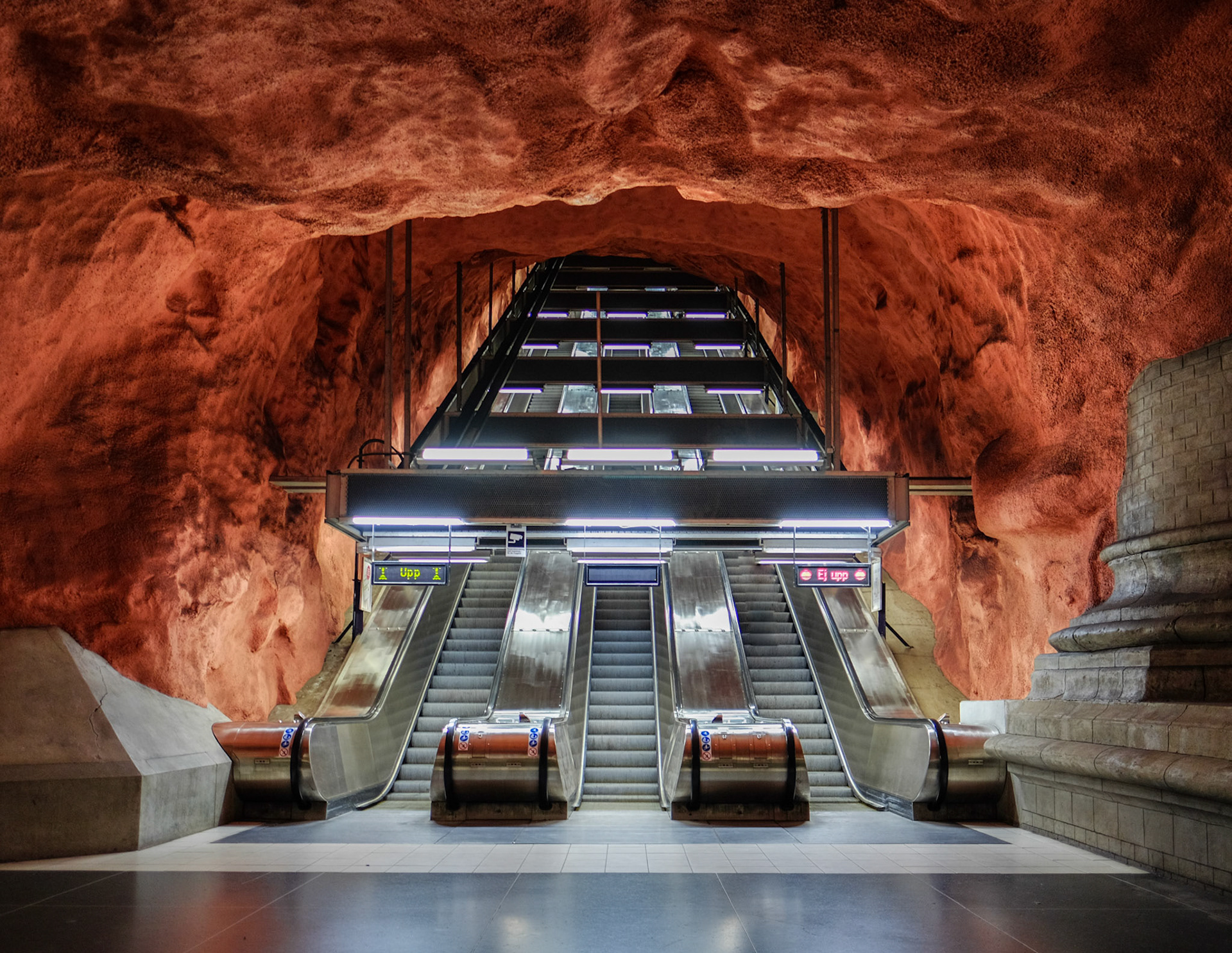
Stockholms tunnelbana - Rådhuset
Solna Centrum
We continue to advance towards the end of the T11 line. Opened in 1975, the Solna Centrum station was decorated by Swedish artists Karl-Olov Björk and Anders Åberg. The design shows a spruce forest under a flaming red sky.
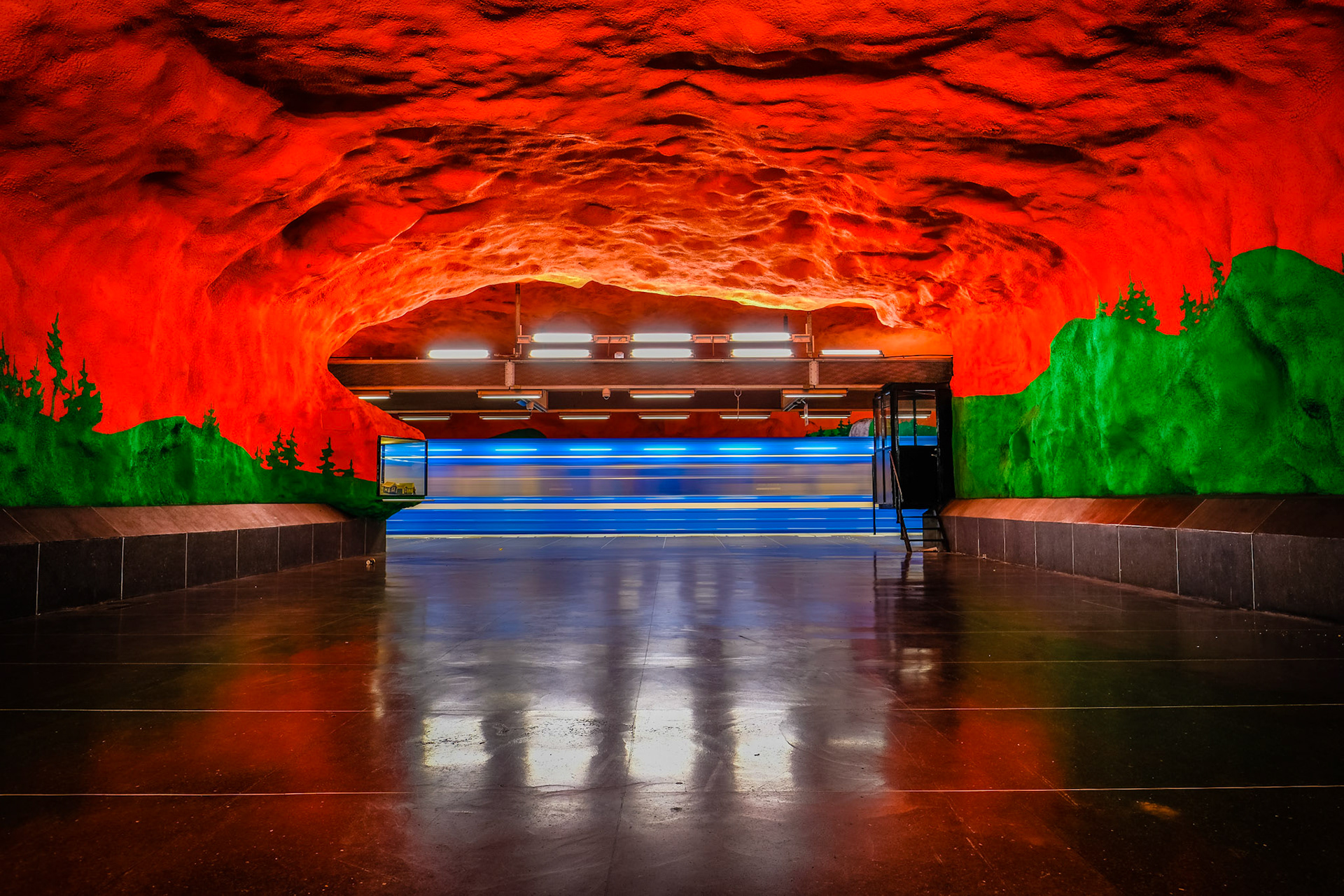
Stockholms tunnelbana - Solna Centrum
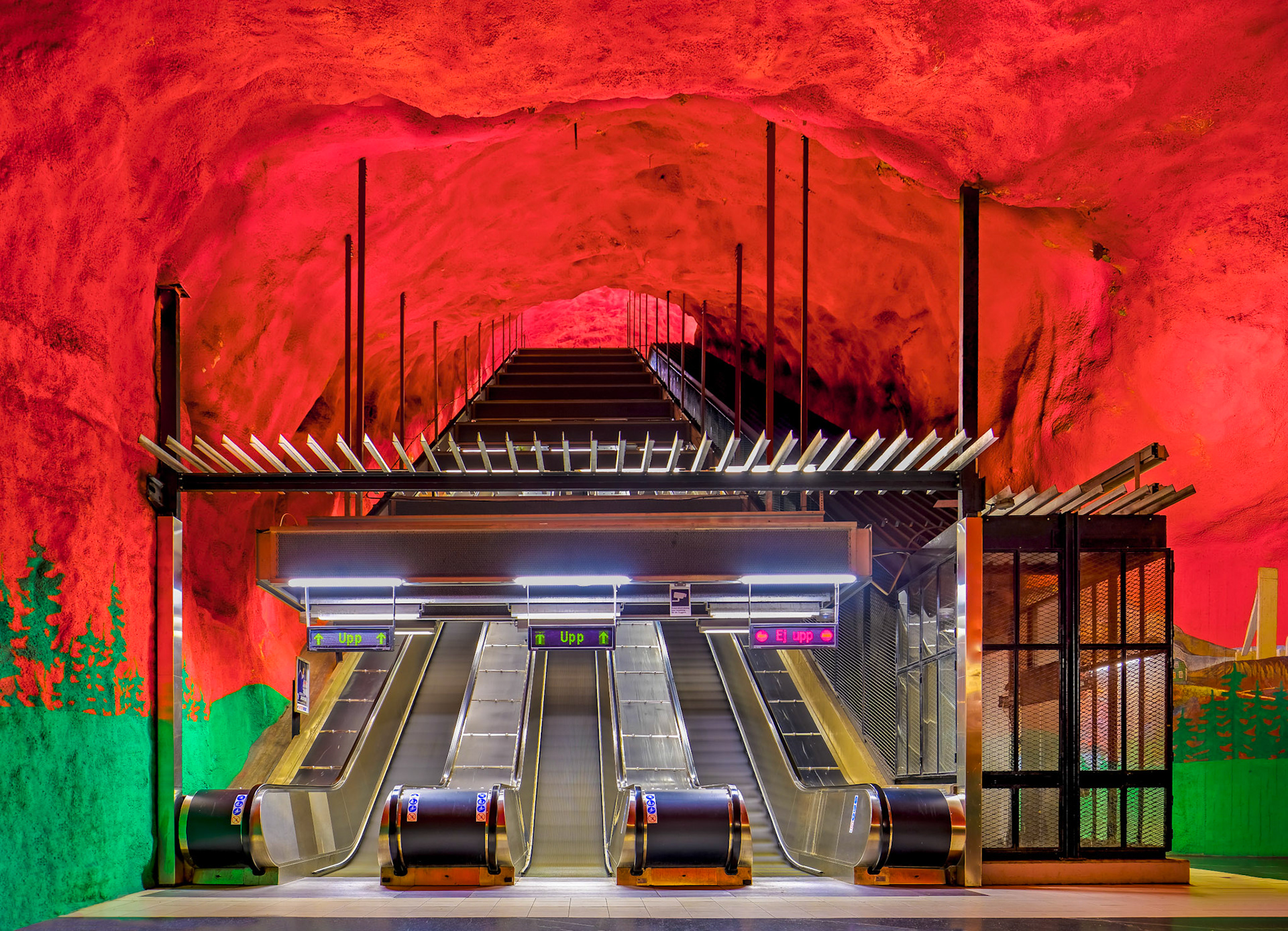
Stockholms tunnelbana - Solna Centrum
Näckrosen
Opened in 1975, the Näckrosen station was decorated by Swedish painter, sculptor and art educator Lizzie Olsson-Arle who lived from 1926 until 2006. The design contains many references to the film studio that used to be above the station.

Stockholms tunnelbana - Näckrosen
Husby
The Husby station was opened in 1977. Swedish painter Birgit Broms who lived from 1924 until 2008 was the station artist.
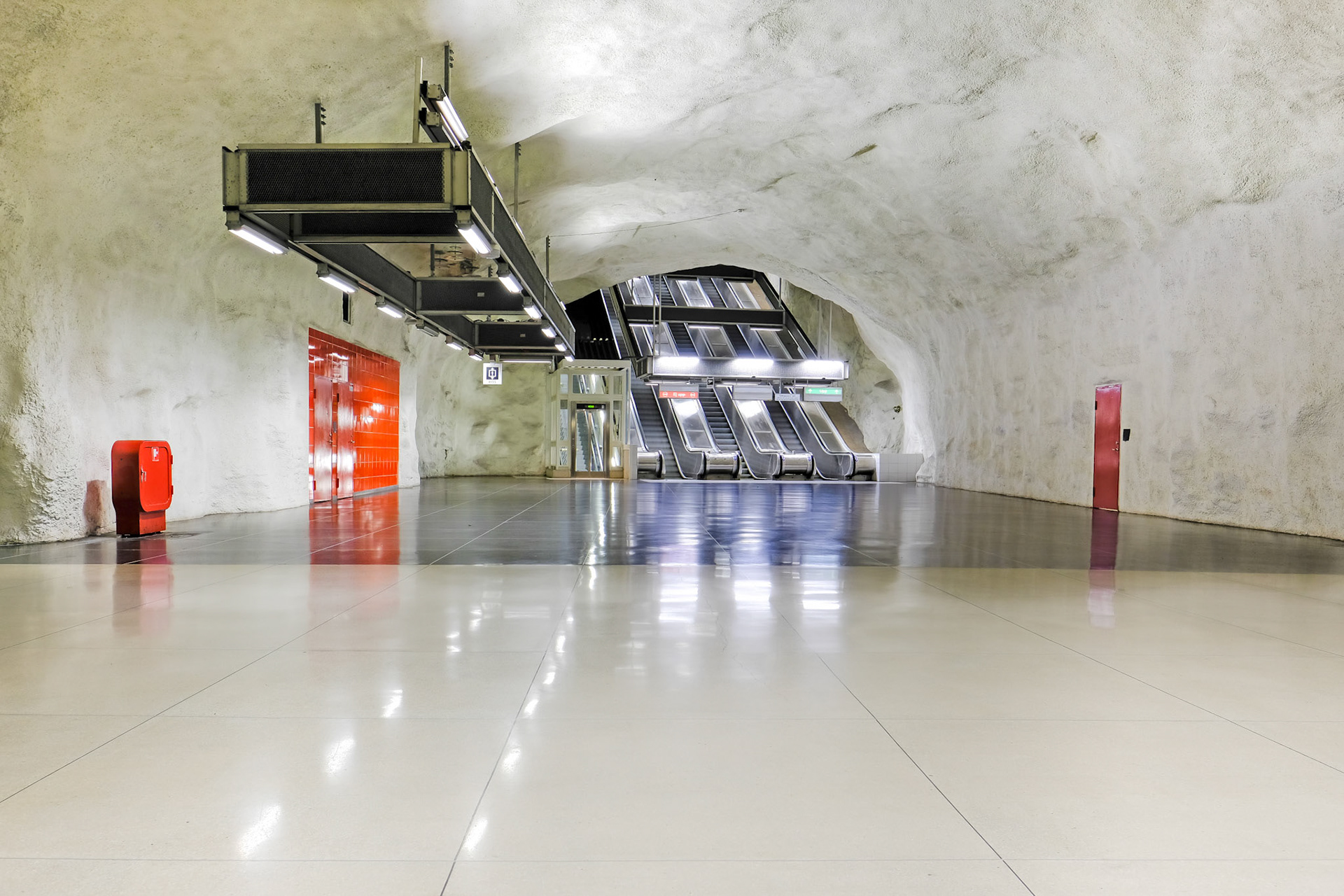
Stockholms tunnelbana - Husby
Akalla
This is the last station on the T11 blue line. Opened in 1977, the station artist was Swedish painter and cartoonist Birgit Ståhl-Nyberg who lived from 1928 until 1982. The design uses one of Birgit Ståhl-Nyberg’s recurring themes: the relationship between woman and man and their behaviour in society.
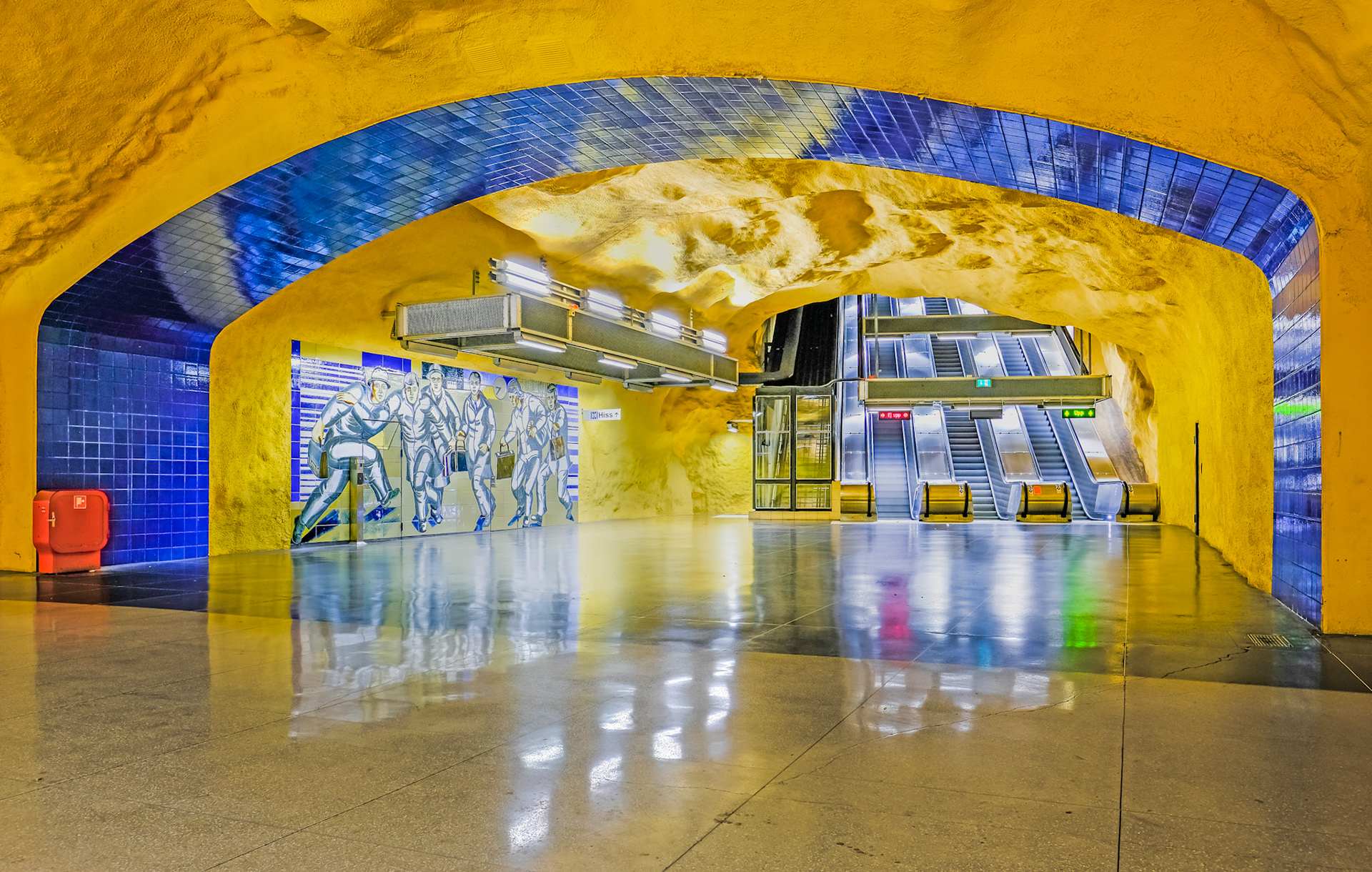
Stockholms tunnelbana - Akalla
Photography tip:
The "regular" tickets are valid for 75min which might be too short if you plan on photographing some stations, so I found the best way to explore was to purchase a 24h travelcard and then to spend a whole evening traveling through the stations. The evening has the double advantage of less people in the subway, so better photo opportunities, and well, you can still spend the day visiting Stockholm outside !
